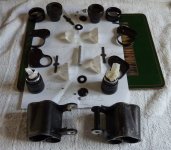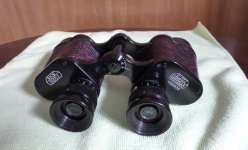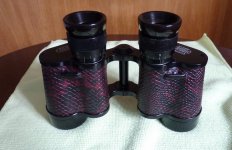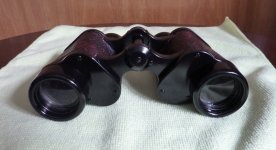This is the Leitz Bidox 6x30 shown in photo 1 stripped down, completely refurbed.
Cleaned inside, the white lettering on the prism plates was cleaned and brightened with a little washing up liquid on an old soft toothbrush,then the letters and numbers masked with liquid latex painted on with a fine brush. The plates and objective rims sprayed black acrylic, then the masking removed from the plates then all was given 2 coats of clear lacquer. The body has been recovered in black and red snakeskin.
Cleaned inside, the white lettering on the prism plates was cleaned and brightened with a little washing up liquid on an old soft toothbrush,then the letters and numbers masked with liquid latex painted on with a fine brush. The plates and objective rims sprayed black acrylic, then the masking removed from the plates then all was given 2 coats of clear lacquer. The body has been recovered in black and red snakeskin.
Attachments
Last edited:









